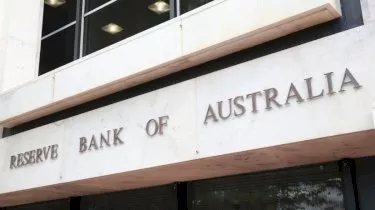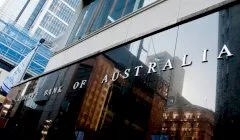Invest
RBA puts chatter of an earlier rate hike to rest
The Reserve Bank of Australia has put to rest chatter among investors that conditions for a higher cash rate could be met as early as next year, reaffirming its stance that the rate is “very likely” to remain at its current level until at least 2024.
RBA puts chatter of an earlier rate hike to rest
The Reserve Bank of Australia has put to rest chatter among investors that conditions for a higher cash rate could be met as early as next year, reaffirming its stance that the rate is “very likely” to remain at its current level until at least 2024.

As the RBA announced its rate hold earlier this month, chatter among investors increased, with many predicting that given the property price boom, the bank could be forced to intervene earlier than planned.
Shane Oliver, chief economist at AMP Capital, tipped at the time that a rate hike could occur in the March quarter 2023.
“The faster than expected economic recovery will likely see the RBA hike rates earlier than 2024, but probably not until 2023 because it fears that if it moves too early without waiting for a much stronger jobs market and 3.5 per cent or so wages growth, inflation will not be sustained in its 2–3 per cent target range,” Mr Oliver said.
But RBA governor Philip Lowe has put these predictions to rest, explaining at the AFR Business Summit on Tuesday that “this is not an expectation that we share”.

“For inflation to be sustainably within the 2–3 per cent range, it is likely that wages growth will need to be sustainably above 3 per cent. This is assuming that Australia generates ongoing growth in labour productivity and that the profit share of national income does not continue to trend higher.
“Currently, wages growth is running at just 1.4 per cent, the lowest rate on record. Even before the pandemic, wages were increasing at a rate that was not consistent with the inflation target being achieved. Then the pandemic resulted in a further step-down. This step-down means that we are a long way from a world in which wages growth is running at 3 per cent plus,” Mr Lowe said.
Tapping into overseas evidence, Mr Lowe said the journey back to sustainably higher rates of wages growth will take time and will require a tight labour market for an “extended period”.
Even in the absence of another major shock, Mr Lowe conceded “it is a long way back to seeing wage increases consistent with the inflation target”.
“The point I want to emphasise is that for inflation to be sustainably within the 2–3 per cent target range, wages growth needs to be materially higher than it is currently,” Mr Lowe said.
“The evidence strongly suggests that this will not occur quickly and that it will require a tight labour market to be sustained for some time.
“Predicting how long it will take is inherently difficult, so there is room for different views. But our judgement is that we are unlikely to see wages growth consistent with the inflation target before 2024,” he said.
Mr Lowe also reiterated that the RBA does not target housing prices, “nor would it make sense to do so”.
“I recognise that low interest rates are one of the factors contributing to higher housing prices and that high and rising housing prices raise concerns for many people.
“There are various tools, other than higher interest rates, to address these concerns, leaving monetary policy to maintain its strong focus on the recovery in the economy, jobs and wages,” Mr Lowe said.
Among these tools, he noted, is the bank’s continuous monitoring of lending standards.
“Looser standards would increase medium-term risks and add to the upward pressure on prices, so would be of concern.
“Reflecting this, the Council of Financial Regulators has indicated that it would consider possible responses should lending standards deteriorate and financial risks increase. We are not at this point, but we are watching carefully,” he concluded.
About the author

About the author


Cash
Cash usage in Australia continues to decline as digital payments rise
In the ever-evolving landscape of financial transactions, Australia is witnessing a significant shift away from cash, as revealed by Worldpay's latest Global Payments Report. According to the report, ...Read more

Cash
Navigating the equilibrium: Investor sentiment in the face of equity peaks and diminishing cash reserves
State Street's latest Risk Appetite Index indicates a nuanced shift in institutional investor sentiment during March, with the index reverting slightly towards neutrality. This subtle recalibration in ...Read more

Cash
RBA's November rate hike overshadows Melbourne Cup festivities
In a move that managed to draw attention away from the thrill of the Melbourne Cup, the Reserve Bank of Australia (RBA) has increased the cash rate by 25 basis points to 4.35 per cent, surprising ...Read more

Cash
RBA makes first cash rate call for 2022
The RBA has announced its first rate decision for 2022. Read more

Cash
Cash remains king for many Australians
Demand for banknotes remains high despite a decline in cash transactions. Read more

Cash
Interest rates to rise next year?
Commonwealth Bank has seconded Westpac’s predictions, forecasting that interest rates will rise well ahead of the RBA’s 2024 timeline. Read more

Cash
RBA makes latest official cash rate call
The Reserve Bank of Australia has made its May call on the official cash rate, with the economy said to be a long way from the conditions needed to precede a rate rise. Read more

Cash
Australia tipped to go cashless by 2024
Australia is forecast to effectively go cashless in just three years, with three in 10 Aussies admitting that “going cashless would be great for the country”. Read more

Cash
Cash usage in Australia continues to decline as digital payments rise
In the ever-evolving landscape of financial transactions, Australia is witnessing a significant shift away from cash, as revealed by Worldpay's latest Global Payments Report. According to the report, ...Read more

Cash
Navigating the equilibrium: Investor sentiment in the face of equity peaks and diminishing cash reserves
State Street's latest Risk Appetite Index indicates a nuanced shift in institutional investor sentiment during March, with the index reverting slightly towards neutrality. This subtle recalibration in ...Read more

Cash
RBA's November rate hike overshadows Melbourne Cup festivities
In a move that managed to draw attention away from the thrill of the Melbourne Cup, the Reserve Bank of Australia (RBA) has increased the cash rate by 25 basis points to 4.35 per cent, surprising ...Read more

Cash
RBA makes first cash rate call for 2022
The RBA has announced its first rate decision for 2022. Read more

Cash
Cash remains king for many Australians
Demand for banknotes remains high despite a decline in cash transactions. Read more

Cash
Interest rates to rise next year?
Commonwealth Bank has seconded Westpac’s predictions, forecasting that interest rates will rise well ahead of the RBA’s 2024 timeline. Read more

Cash
RBA makes latest official cash rate call
The Reserve Bank of Australia has made its May call on the official cash rate, with the economy said to be a long way from the conditions needed to precede a rate rise. Read more

Cash
Australia tipped to go cashless by 2024
Australia is forecast to effectively go cashless in just three years, with three in 10 Aussies admitting that “going cashless would be great for the country”. Read more








